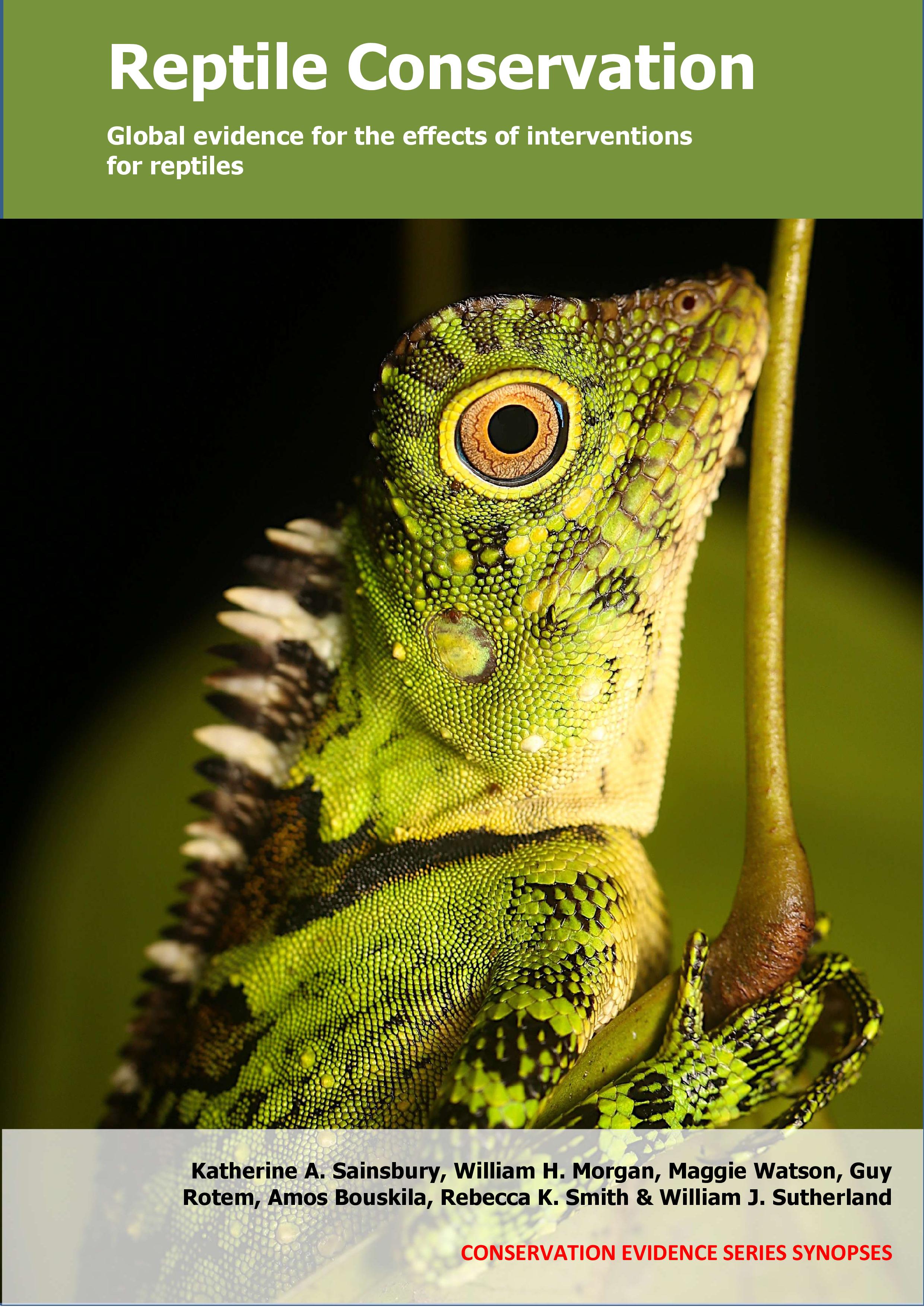Use selective logging
-
Overall effectiveness category Awaiting assessment
-
Number of studies: 3
View assessment score
Hide assessment score
How is the evidence assessed?
-
Effectiveness
not assessed -
Certainty
not assessed -
Harms
not assessed
Study locations
Supporting evidence from individual studies
A replicated, randomized, controlled study in 1987–1997 in tropical forest in Amazonas, Brazil (Lima et al. 2001) found that greater selective logging intensity increased the density of one of three lizard species, but density of all three lizard species reduced over time after logging. Black-spotted skink Mabuya nigropunctata density increased with logging intensity, but striped forest whiptail lizard Kentropyx calcarata and giant ameiva Ameiva ameiva densities did not (data are presented as statistical model outputs). Black-spotted skink and giant ameiva densities were higher in plots with trees felled 4 years earlier, compared to plots where trees were felled 9–10 years earlier, or in unmanaged plots. Whiptail lizard density was higher in plots felled 4 years earlier than 9–10 years earlier, but density in plots felled 9–10 years earlier was no different in unmanaged plots (see original paper for details). In three blocks (24 ha each), forest plots (4 ha each) were managed as follows: commercial tree felling using selective logging in 1987 (two plots), in 1988 (one plot), in 1993 (one plot), or no management (one plot). The reduction in wood volume after logging ranged from 44–107 m3/ha (including commercial trees and those accidentally felled/killed by logging operations). Lizards were surveyed on foot by walking six 200 m x 20 m transects in each plot during daytime in August–October 1996 and July 1997. The maximum number of lizards counted/ plot was used as a measure of density.
Study and other actions testedA replicated, randomized, controlled, before-and-after study in 1992–2000 in oak-pine and oak-hickory forest in Missouri, USA (Renken et al. 2004) found that there was no difference in reptile abundance between sites with small group or single tree selection harvesting and those with combined clearcutting and thinning, although four of six species of reptiles increased in abundance in clearcut and thinned sites after management began. Overall, abundances of six reptile species were similar between small group or single tree selection harvesting and clearcutting with thinning and unmanaged sites (results reported as statistical model outputs). Abundances of four of six species increased after clearcutting and thinning took place compared to before management (see original paper for details). Nine sites (312–514 ha) were randomly assigned to treatments: small group or single tree selection harvesting (5% area; uneven-aged management), clearcutting in 3–13 ha blocks (10–15% total area) with forest thinning (even-aged), or no management (3 sites/treatment). Harvesting was in May 1996 and 1997. Twelve drift-fence arrays with pitfall and funnel traps were established/site. Traps were checked every 3–5 days in spring and autumn 1992–1995 (before management) and 1997–2000 (after management).
Study and other actions testedA replicated, site comparison study in 2013–2015 in mixed forest in Oaxaca, Mexico (Aldape-Lopez & Santos-Moreno 2016) found that reptile diversity but not richness tended to be higher following low intensity selective logging compared to high intensity logging, but lower than in unlogged forest. Results were not statistically tested. Reptile richness was 2–4 species after low intensity and 3–5 species after high intensity logging compared to 13 species in unlogged forest. Reptile diversity was lowest in high intensity logged forest after five years of recovery (Shannon-Wiener Index: 2 effective species) compared to low intensity logged forest after one year of recovery (3) or unlogged forest (7). See paper for details of individual species abundances. Reptiles were monitored monthly in August 2013–July 2015 in two 0.1 ha plots in forest stands at 1, 5 and 10 years after high intensity (elimination of canopy cover, promotes homogeneous forest stands; 6 plots) and lower intensity logging (fewer trees removed as part of ‘group selection logging’; 6 plots) and in forest that had not been logged for at least 35 years (2 plots). Reptiles were surveyed using intensive searches (1,344 total man hours) and pitfall traps (64,512 total trap hours) and identified to species level after capture.
Study and other actions tested
Where has this evidence come from?
List of journals searched by synopsis
All the journals searched for all synopses
This Action forms part of the Action Synopsis:
Reptile Conservation
Reptile Conservation - Published 2021
Reptile synopsis





)_2023.JPG)














